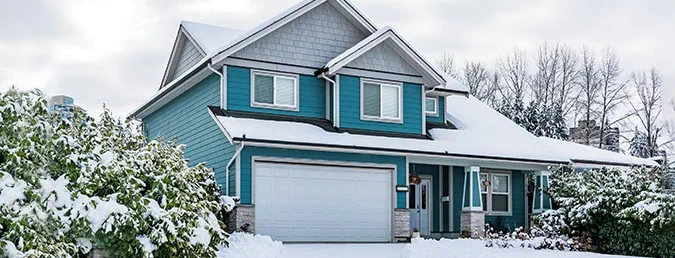
When the fall weather starts to turn chilly, consider it a gentle nudge from Mother Nature to start preparing your home for winter. Read on for some suggestions on how to keep your home safe and warm this winter.
1) Seal your home
To ensure the cold air stays outside, check for drafts throughout your home. You can do this by holding a lit candle near the following areas:
- Windows
- Doors
- Vents and fans
- Plumbing areas
- Air conditioners
- Mail chutes
If the candle flickers, then you have a draft. Seal up the openings and reinforce existing points of entry with weather stripping. You can also caulk the windows to make sure they are truly sealed against the cold.
2) Clean your gutters
If your gutters are clogged with old leaves, they can freeze and block the drainage, allowing melting ice and snow to slowly seep into your roof.
3) Upgrade your thermostat
If you are looking to reduce your utility bills without sacrificing comfort, consider investing in a programmable thermostat or a smart thermostat. With a programmable thermostat, you can raise or lower the temperature on your home’s heating system based on when you are home, away, or asleep. There are also smart thermostats, which let you control the temperature remotely from your phone or other internet-connected device.
4) Reverse your ceiling fans
Switch the direction of your ceiling fans from counterclockwise to clockwise. The fans will then produce an updraft to push the rising hot air downward. This is especially helpful in rooms that have high ceilings.
5) Take inventory of your emergency supplies
Stock up on batteries, flashlights and storm lanterns. You may also want to invest in a generator to provide power if the lights go out during a storm.
6) Turn off external faucets
Drain your garden hose and flush your sprinkler system to prevent any damage from freezing. You may want to call in a professional to properly winterize your system.
7) Protect your pipes from freezing
Prevent pipe bursting and avoid costly repairs with these simple steps:
- Keep your heat on even when you’re not home so that your pipes don’t freeze and burst.
- Allow your faucets to drip during severe cold snaps.
- Wrap any exposed piping to prevent freezing. You can find foam rubber or fiberglass sleeves for pipes and outdoor hose bibs at hardware stores.
8) Check your heating system
Turn the heat on before the arrival of winter to ensure everything is in working order. If your heating system needs repair, tend to it as early in the season as possible — before the real cold sets in.
- Categories:


